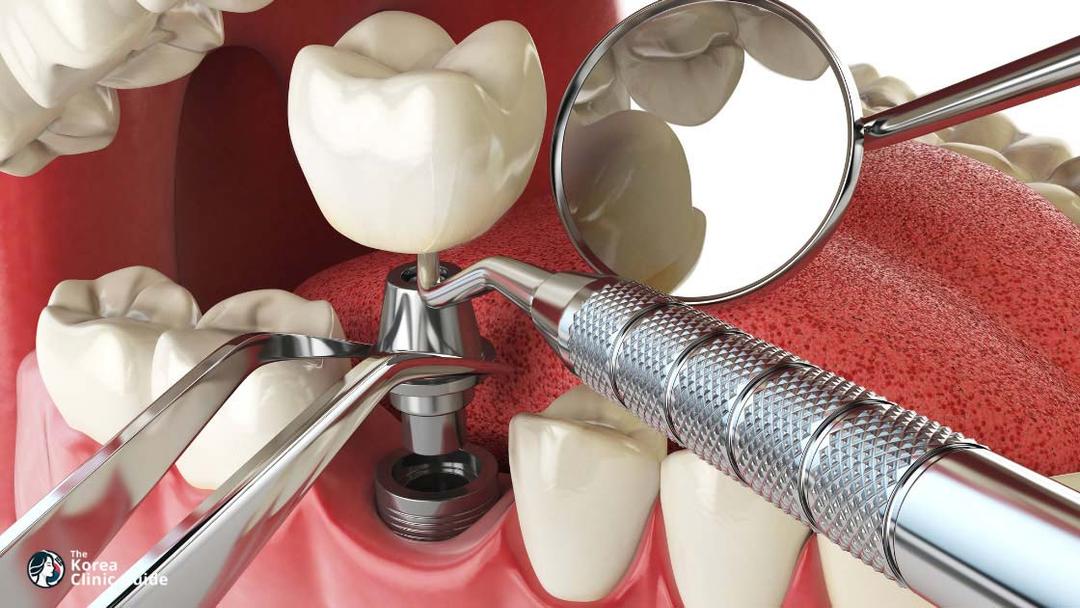Implant
Description
Implantable port placement is a medical procedure designed to provide long-term venous access for patients requiring frequent intravenous treatments, such as chemotherapy, antibiotics, or nutritional support. The procedure typically begins with the patient lying on their back on an operating room table. After administering local anesthesia to minimize discomfort, a small incision—generally about 2 to 3 centimeters long—is made near the chest or upper arm. Using ultrasound or fluoroscopy for guidance, a surgeon or interventional radiologist identifies a suitable vein, usually the subclavian vein, internal jugular vein, or another large central vein. A thin, flexible catheter is then inserted into the vein through a separate, smaller incision made in the skin. Once the catheter is adequately positioned, its other end—fitted with a small, port device made of metal or plastic with a self-sealing silicone septum—is tunneled under the skin and connected. The port is typically placed in a pre-formed subcutaneous pocket created by the surgeon near the initial incision site. After confirming the correct placement of the catheter and the port system via imaging, the incisions are closed with stitches, and sterile dressings are placed over the wounds. The entire procedure usually takes about 1 to 2 hours. Postoperative care involves instructions for keeping the site clean and monitoring for signs of infection or complications, with follow-up appointments to ensure proper function and condition of the implantable port.
Ailments treated by this procedure: Multiple Tooth Loss, Broken Molar, Missing Tooth, and Dental Trauma
Search
Categories
Related Posts




Top Implant Clinics
Gangnam Gentle Dental Clinic
Gangnam, Sinnonhyeon, Nonhyeon Station
Free consultation from the clinic
Gangnam Gentle Dental Clinic, located in the bustling district of Seocho-gu, Seoul is committed to delivering bright smiles with honest and safe treatment. Recognizing the importance of accessibility, the clinic opens its doors on weekdays and weekends, ensuring emergency dental care is just a visit away, according to personal schedules. With a focus on reducing the treatment period and the number of hospital visits through research and development, patients are guaranteed only the necessary treatments following thorough consultations. Here's a brief explanation of the procedures they offer: Cavity and Filling: Treatment of tooth decay and restoration of the tooth using fillings. Clear Aligner: Orthodontic devices that are transparent and used to adjust teeth. Root Canal: A treatment to repair and save a badly damaged or infected tooth. Gum Treatment: Procedures aimed at treating gum diseases and infections. Wisdom Tooth Extraction: Removal of one or more wisdom teeth due to pain, infection, or lack of space. Cosmetic Center Minimal Shaving Veneers: Thin layers of porcelain or composite material placed over the front teeth to improve aesthetics with minimal tooth preparation. Gum Contouring: Reshaping the gum line to improve the appearance of the gum and make the teeth look more proportionate. Teeth Whitening: Cosmetic procedure to lighten and whiten teeth. Implant 3D Guided Implant: A dental implant procedure planned and placed using 3D imaging for precision. Straumann Implant: High-quality dental implants known for their innovative technology and reliability. Osstem Implant: Dental implants known for their affordability and quality. Special Emergency Treatment: Immediate care for dental emergencies such as severe pain, broken teeth, or abscesses. Botox: Used both for cosmetic purposes to reduce the appearance of wrinkles and for therapeutic purposes to treat conditions like TMJ (temporomandibular joint disorders). Temporomandibular Joint: Treatment aimed at addressing issues related to the jaw joint and surrounding muscles, which can cause pain and dysfunction. These services are aimed at addressing a wide range of dental health needs, from routine care to specialized treatments, ensuring patients have access to comprehensive dental care. The clinic prides itself on an established infection prevention system and a stringent sterilization system to ensure a clean, safe, and germ-free environment for both patients and staff. Emphasizing minimal pain and maximum comfort, the team employs advanced digital equipment for systematic and precise examinations. Led by CEO Sungho Kim, Gangnam Gentle Dental Clinic is dedicated to ensuring every visit is as comfortable as possible, making it a preferred choice for dental care in Gangnam.
learn more
Minish Dental Hospital
Gangnam-gu Office, Hak-dong, Sinsa, Apgujeong Rodeo Station
Free consultation from the clinic
Minish Dental Hospital, the most highly awarded dental clinic in Asia, stands out for its exceptional blend of cutting-edge dental treatments and personalized care. Renowned for its innovative Minish Veneers among other dental procedures, the clinic is a beacon of excellence in the dental community, boasting impressive statistics of 113,118 cases, 84,504 hours of research and development, and a dedicated team of 102 top dentists and technicians. Procedures offered at Minish Clinic in Gangnam include: Minish Veneers: Custom, semi-permanent veneers that require minimal to no tooth shaving. They are designed to address various dental issues such as discolored teeth, cavities, damaged teeth, misalignments, and more with a natural appearance. Minish Bridges: A solution for missing teeth, particularly front teeth, that aims to provide an aesthetic and efficient alternative to traditional bridges and implants. It minimizes tooth alterations and protects existing teeth. Molar Minish: This procedure targets extensive molar damage, offering an alternative to crowns by minimizing tooth reduction and preserving gum health. Pink Minish: Designed for individuals with receding gums due to dental aging, trauma, or severe periodontal issues. It improves both the function and appearance of teeth and gums, addressing exposed tooth roots and the illusion of elongated teeth. Dual Minish: A treatment for widespread anterior teeth damage, shielding the entire front surface without the need for extensive tooth removal, typically required for crowns. Minish Implants: Dental implant solutions that replace missing teeth, designed to integrate seamlessly with the mouth's natural structure and appearance. Orthodontic Treatment: Procedures aimed at correcting teeth and jaws that are positioned improperly, improving oral function and aesthetic appearance. Teeth Whitening: Cosmetic treatment designed to lighten teeth and help remove stains and discoloration, enhancing the smile. Cavities and Prosthodontics: Treatments for tooth decay and replacement with artificial structures such as crowns, bridges, and dentures to restore and maintain oral function. Periodontal Therapy: Treatments to preserve the health of the gum and bone, including therapies for gum disease and gingivitis. Bruxism and Temporomandibular Joint (TMJ): Solutions for conditions affecting jaw joint health and habits leading to teeth grinding, aiming to reduce pain and prevent long-term damage. Minish Dental Spa: A comprehensive approach that combines dental care with spa treatments for a relaxing and rejuvenating dental experience. Located in the heart of Gangnam, Seoul, Minish Dental Hospital is equipped with 19 of the most advanced pieces of dental equipment available, ensuring each patient receives the highest quality of care. Esteemed not only for its technical advancements but also for its patient-centric approach, the clinic's specialists, including CEOs Dr. Jung Ho Kang and a team of veneer, orthodontic, and general dental specialists, are committed to treating patients as family, focusing on honest, ethical, and highly personalized treatment plans. Whether it's for routine care or a complete smile makeover, Minish Dental Hospital is the choice of Korea's top celebrities and anyone seeking superior dental care.
learn more
TU Dental Clinic (TU Dental)
Gangnam, Sinnonhyeon, Nonhyeon, Yeoksam Station
Free consultation from the clinic
Clinic Introduction: TU Dental Clinic (TU Dental) at Gangnam Station is a trend-setting dental clinic dedicated to providing natural and beautiful smiles. They are renowned for minimizing pain during treatments and prioritizing the preservation of natural teeth. Orthodontics: General Orthodontics: TU orthodontics establishes personalized treatment plans considering tooth alignment, age group, and lifestyle. They offer a variety of braces such as Clippy-L, Clippy-C, and Tiggle brackets to suit different aesthetic and comfort needs. Clippy-L Brackets: This type of bracket is attached to the inner side of the teeth, making it less noticeable and smaller, thereby reducing discomfort. Clippy-C Brackets: These snap-type self-ligating brackets are small in size, which reduces friction and shortens the treatment period. Tiggle Brackets: Tiggle brackets are designed to alleviate discomfort and speech difficulties caused by traditional lingual orthodontics by reducing the size of the bracket. Combination Brackets: For better aesthetics, a mix of metal and ceramic brackets are used, making this option more approachable compared to regular braces. Implants: Fullcase Implant: This complex surgery requires at least 4 to 6 teeth and is carried out with a digital system for more accurate and precise treatment. TU Dental Clinic uses 3D imaging to visualize the oral condition and set up a precise surgical plan, followed by a minimal incision and the placement of a customized prosthesis. Partial Implant: This treatment restores the function of one or more teeth within a short period of time while taking into account the aesthetic features of the implant's shape, color, and transparency. Esthetic: ZeroNate Procedure: An advanced ceramic fabrication technique from Switzerland that uses a thin coating film of 0.01mm to enhance the tooth’s shape and color without unnecessary removal. This process involves designing bespoke teeth and attaching a 0.01mm ceramic layer using enamel adhesive for a natural and healthy result. Ceramic Inlays/Onlays: Used to treat mid-phase caries with materials that mimic the natural color of teeth, providing strong durability and excellent aesthetics. Ceramic onlays are for larger or more widespread caries and offer excellent adhesion with minimal risk of falling off. Zirconia Crowns: Zirconia crowns are known for their durability and color similarity to natural teeth. They are non-toxic, human-friendly, and require minimal tooth removal, making them suitable for both front teeth and molars. Integrated Care: Caries Treatment: Initial phase caries are treated with resin, a tooth-colored material that replaces the cavity. For deeper caries, inlays, onlays, or zirconia crowns are used, offering durability and aesthetic qualities similar to natural teeth. These treatments restore the function and appearance of damaged teeth while relieving pain and improving oral health.
learn more
Blanche Dental Clinic
Nonhyeon, Sinnonhyeon Station
Free consultation from the clinic
Blanche Dental Clinic in Nonhyeon offers a variety of advanced dental procedures to enhance your smile and maintain oral health. Below is a categorized list of the major procedures available, explained succinctly: Restorative Procedures Implants: We focus on providing precise and safe implant placements that are crucial for lifelong use. Our approach avoids unnecessary implant recommendations, ensuring treatments are thoroughly explained and understood. Cosmetic Procedures Laminates: Achieve a natural-looking smile with laminates that resemble real teeth. This procedure can be completed within the same day and does not require anesthesia or temporary teeth due to its non-invasive nature. Gum Contouring: Enhance the appearance of your gums with minimally invasive gum contouring. This procedure helps correct uneven gum lines for a more aesthetically pleasing smile. Teeth Whitening: Brighten your smile with our professional teeth whitening services. It's designed to give you noticeable results in a single visit. Orthodontic Procedures Teeth Straightening: Our customized orthodontic solutions cater to various age groups to correct misaligned teeth and jaw discrepancies. This treatment not only improves appearance but also enhances overall dental health. Sedation Dentistry Sedation Treatment: Patients can opt to receive all types of dental treatments under sedation, making the procedure stress-free and comfortable. This includes implants, root canals, tooth extractions, and aesthetic treatments, providing an anxiety-free experience. Special Packages Blanche Air (Self Laminate): A unique home-application laminate solution for maintaining the aesthetics of your smile. This package is part of our comprehensive aesthetic solutions to cater to individual needs. Gummy Smile Treatment: Specialized treatment for reducing excessive gum visibility when smiling. Enhances the balance and symmetry of your smile. Botox and Gum Surgery: For additional aesthetic improvements, Botox and gum surgery are available. These treatments are aimed at enhancing facial aesthetics and overall dental appearance. Our goal is to provide tailored dental care that aligns with your individual needs, ensuring both functional and aesthetic outcomes for a bright, healthy smile.
learn more
White Dream Dental Clinic
Gangnam, Sinnonhyeon, Gyodae Station
Free consultation from the clinic
White Dream Dental Clinic in Gangnam Station offers a variety of specialized dental services designed to cater to different patient needs. Orthodontics Invisalign: This is a type of clear aligner used for teeth straightening. It provides a discreet way to achieve a well-aligned smile. Children's Orthodontics: Tailored orthodontic treatments for children, focusing on early intervention. It helps correct dental issues before they become more serious. Partial Orthodontics: This treatment targets specific areas needing correction without involving the entire mouth. It is beneficial for minor misalignments. Transparent Braces: Clear braces provide a more aesthetic option for dental alignment. They function like traditional braces but are less noticeable. Ceramic Braces: These braces blend with your teeth, offering a less conspicuous treatment option. They are durable and effective in correcting alignment. Self-ligating Braces (Clippy-C): These braces feature a specialized clip mechanism instead of elastic bands, allowing for quicker adjustments. They reduce friction and discomfort during treatment. Metal Braces: Traditional braces using metal brackets and wires. They are highly effective for complex alignment issues. Combination Braces: Uses both metal and clear brackets for a balanced approach to orthodontic treatment. It combines the strength of metal with the aesthetics of ceramics. Lingual Braces: Braces placed on the inside surfaces of teeth for hidden treatment. Ideal for individuals wanting a completely discreet option. Implants Types of Implants: Various types of implants are offered to suit different patient needs. Each type is designed for specific conditions and preferences. Full Mouth Implants: A comprehensive solution for replacing all teeth in the upper or lower jaw. It provides full dental restoration with multiple implants. Computer-Analyzed Implants: Uses advanced computer imaging to plan the precise placement of dental implants. This ensures optimal results and accuracy. Same-Day Implants: Allows for the placement of implants and temporary crowns in a single visit. It significantly reduces the waiting time for dental restoration. Autogenous Tooth Bone Grafting: Uses the patient's own tooth material for bone grafting. This method promotes better integration and healing. Custom Implants: Tailored specifically to the patient's needs and anatomy. It ensures a perfect fit and optimal function. Implant Revision Surgery: Addresses issues with previously placed implants. This involves correcting or replacing unsuccessful implant treatments. Sinus Lift Surgery: Procedure to increase bone height in the upper jaw by lifting the sinus membrane. It provides adequate bone structure for implant placement. Aesthetic Dentistry Laminates (Veneers): Thin veneers are placed over teeth to improve aesthetics. They can fix imperfections like chips, gaps, or discoloration. Teeth Reshaping: Involves reshaping or contouring teeth for a more uniform appearance. It's a simple procedure to correct minor defects. Teeth Whitening: Professional teeth whitening procedures to remove stains and discolorations. Provides a brighter, more attractive smile. Renewal of Laminates: Replacement or updating of old veneers. Ensures that your smile remains aesthetically pleasing. All-Ceramic Restorations: High-quality ceramic materials are used for restorations. They offer durability and a natural appearance. Gum Contouring: Reshapes the gum line to improve the appearance of your smile. Can correct excessive gum coverage or uneven edges. General Dentistry Cavity Treatment: Involves the removal of tooth decay and filling cavities. It prevents further decay and restores tooth function. Resin/Inlays: Composite fillings and inlays for treating cavities and damage. They provide strong and aesthetic repair options. Root Canal Treatment: Removal of infected tooth pulp to save a tooth from extraction. Relieves pain and restores the health of the tooth. Crowns: Caps placed over damaged or decayed teeth for protection and aesthetics. They are essential for strengthening and restoring damaged teeth. Bridges: Fixed dental prosthetics used to replace one or more missing teeth. They use adjacent teeth as support. Post and Core: Procedures to rebuild and strengthen a tooth before adding a crown. Essential for severely damaged teeth. Wisdom Teeth Extraction: Removal of impacted or problematic wisdom teeth. Prevents pain, infection, and alignment issues. Dentures: Custom-fitted artificial teeth for replacing missing teeth. They restore function and aesthetics for patients with lost teeth. Gum Treatment: Management of gum diseases and other gum issues. Includes cleaning, scaling, and surgical procedures to restore gum health. Visit White Dream Dental Clinic for comprehensive dental care where your natural teeth are preserved and challenging cases are handled with expert precision.
learn more
Yonsei Good Day Dental Clinic - Yangjae
Yangjae Station
Free consultation from the clinic
Yonsei Good Day Dental Clinic - Yangjae Branch offers a variety of specialized dental procedures to cater to your dental health needs. Implants and Dentures: Implant Placement: Securely places dental implants to replace missing teeth, restoring function and aesthetics. Full-mouth Implants: Comprehensive implant solutions for patients missing most or all of their teeth, enhancing stability and comfort. Implant Dentures: Combines the benefits of implants and dentures for improved fit and function. i-GBR (Immediate Guided Bone Regeneration): Accelerated bone grafting that allows immediate implant placement after tooth extraction. Orthodontics: Clear Aligners: Custom-made, transparent braces to straighten teeth discreetly. Damon Braces: Low-friction braces that offer more comfort and require fewer adjustments. Ceramic Braces: Tooth-colored braces that blend with natural teeth for a less noticeable appearance. Interceptive Orthodontics: Early intervention for children to guide proper jaw development and alignment. Jaw Joint Treatment: Splint Therapy: Custom-made devices to alleviate jaw pain and prevent teeth grinding. Non-surgical Correction: Aligns the jaw without surgery, using orthodontic appliances for a balanced bite. Botox Injections: Used to relieve muscular tension in the jaw joint and reduce symptoms of bruxism. Natural Tooth Preservation: Microscope-assisted Root Canal Therapy: Precision endodontic treatment using advanced microscopes to save natural teeth. Enamel Matrix Derivative Treatment: Promotes the regeneration of tooth-supporting tissues to prevent tooth loss. Minimally Invasive Surgery: Procedures like root-end surgery designed to preserve natural teeth with minimal tissue disruption. Cosmetic Dentistry: Non-prep Veneers: Thin veneers that are bonded to the teeth without extensive preparation, providing a natural look. Gingival Grafting: Surgical procedures to restore receded gum tissue, improving oral health and aesthetics. Teeth Whitening: In-office treatments that can significantly brighten your smile in a single visit. Gummy Smile Treatment: Collaboration between periodontics and orthodontics to correct excessive gum display. Oral Surgery: Sedative Wisdom Tooth Extraction: Gentle removal of wisdom teeth under sedation for a pain-free experience. Sinus Lift: Elevates the sinus floor to allow for the placement of upper jaw implants. With state-of-the-art facilities and a skilled team, Yonsei Good Day Dental Clinic ensures comprehensive and quality dental care in a comfortable environment.
learn more
Sungmoon Dental Hospital
Ssangmun Station
Free consultation from the clinic
Sungmoon Dental Hospital in Dobong is a Ministry of Health and Welfare-approved dental hospital that offers high-quality dental care with state-of-the-art digital equipment. The hospital operates its dental lab to ensure precise prosthetic work and prioritizes conservative treatments to save natural teeth. Dental Procedures Offered Orthodontics Non-extraction Ceramic Braces: Uses advanced ceramic materials to straighten teeth without the need for extraction. Ensures aesthetic correction with minimum discomfort. Implantology Digital Implants: Employs computerized analysis and 3D CT scanning for precise implant placement. Offers a customized approach through in-house dental lab for better fitting prosthetics. Conservative Dentistry Root Canal Treatment: Focuses on saving infected or damaged teeth through specialized endodontic procedures. Aims to retain the natural tooth structure whenever possible. Prosthodontics Custom-Made Crowns and Bridges: Fabricated in the hospital's own dental lab for high precision and quality. Enhances the durability and natural appearance of dental restorations. Key Features of Sungmoon Dental Hospital Extended Hours for Professionals: Evening appointments available for busy individuals to receive dental care without worrying about time constraints. Enhanced Comfort Anesthetics: Utilizes a two-stage anesthesia system to alleviate dental anxiety and ensure a pain-free experience. Collaborative Care: Employs a team-based approach by involving specialists from various dental fields for comprehensive treatment planning.
learn more








